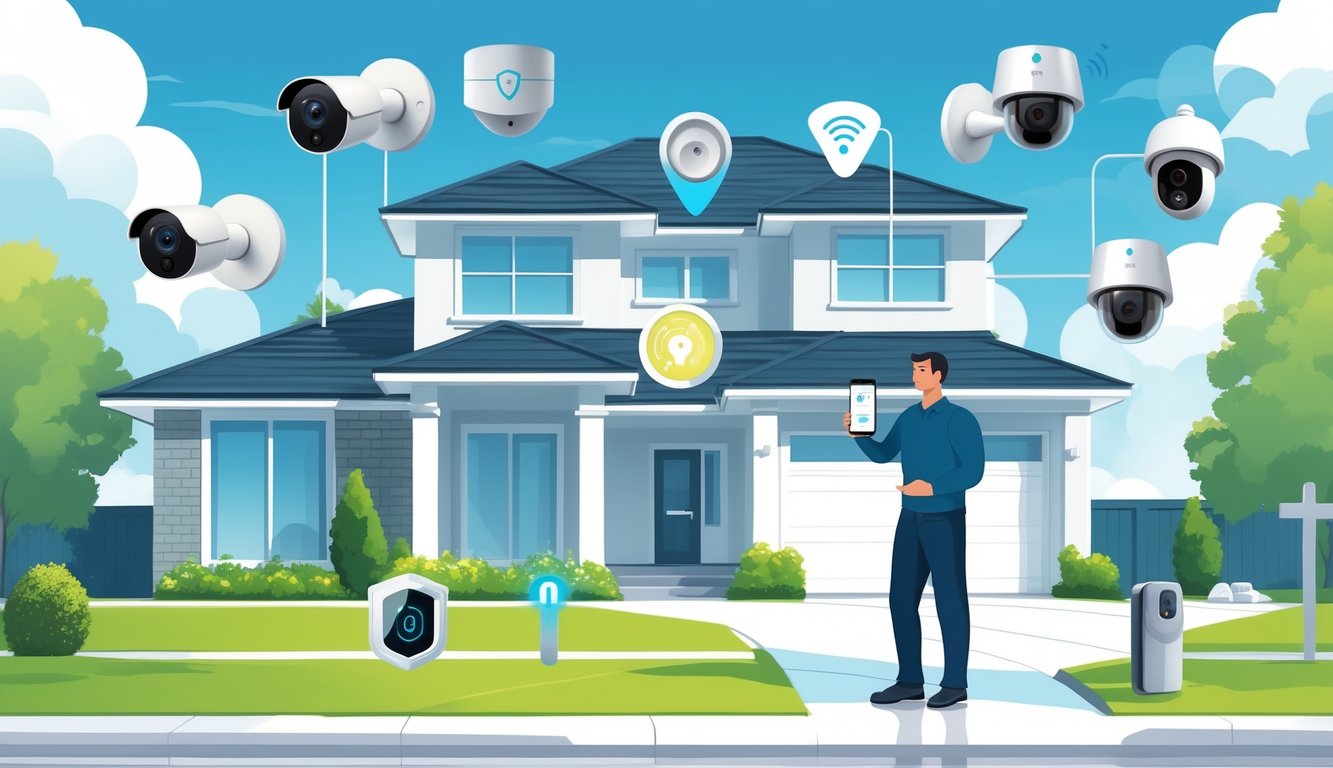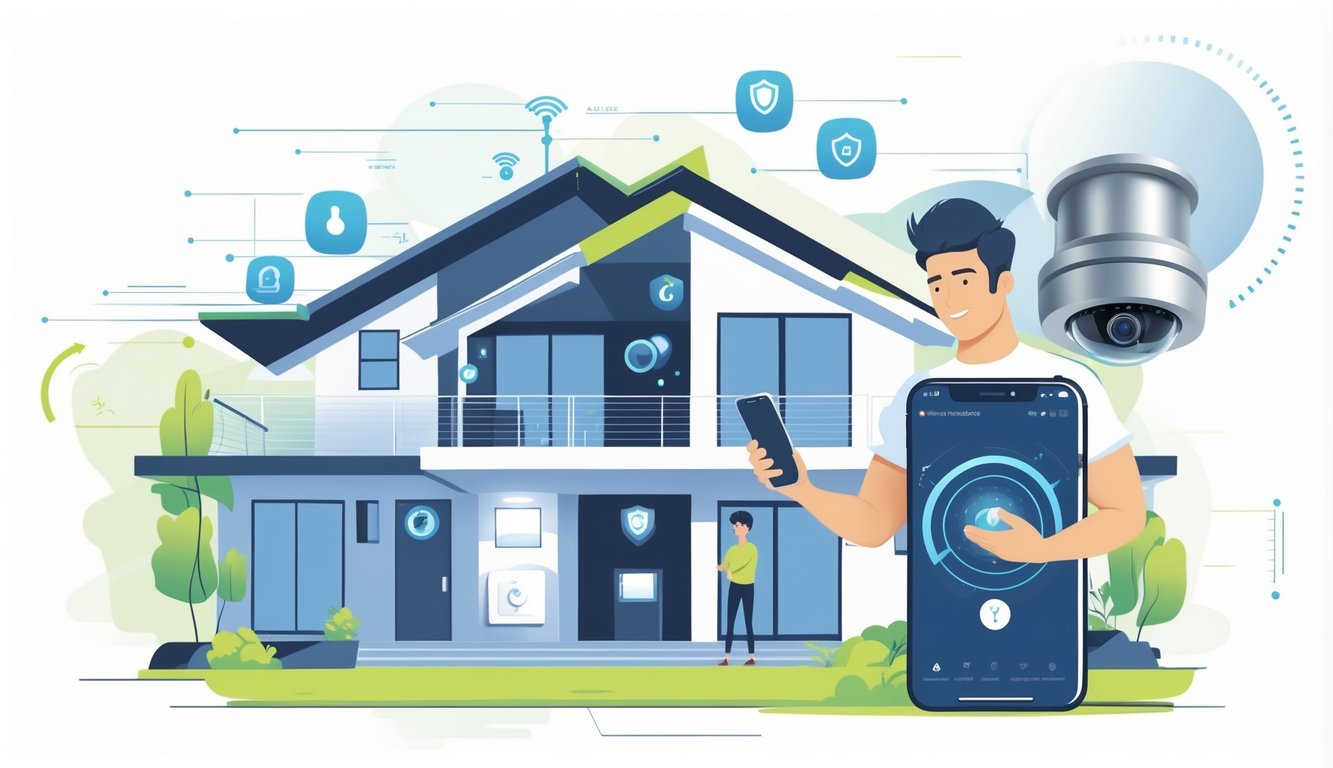
So, an alarm company guy tried to pitch me this $60-a-month “guaranteed peace of mind” system. I laughed. Every cop I’ve ever talked to? They basically say, “good luck.” Those contract systems respond slower than, I don’t know, my dentist’s office. But here’s the weird thing—cheap upgrades like solar motion lights or those $40 smart doorbell cams (the ones you install while waiting for your pizza) actually stop break-ins better than those massive monitored setups. At least, that’s what Consumer Reports and Howard Levinson say, and that guy’s been around forever. Stickers on the window? Please. And don’t make me start on those companies gobbling up customer lists and then ghosting when you actually need help—Levinson called them out for that nonsense, and honestly, he’s not wrong.
I got bored one weekend, picked up some magnetic sensors, and bolted on a video doorbell that came with a manual written by, I swear, a robot. Suddenly, neighbors start texting about weird cars on the street. Turns out, the cheap tech actually scares off the local teens—my expensive alarm system did nothing, twice, when it actually mattered. Even the National Crime Prevention Council finally admits it: little stuff like window pin locks and cheap motion lights works better than those sprawling, “professional” setups (which, by the way, lose WiFi every time it’s windy). And honestly? Nothing beats an obvious, visible deterrent, even if it’s basically the price of a burrito.
Here’s the scene: I’m juggling a bunch of random installation manuals, Alexa’s blasting ‘80s music instead of arming anything, and somehow my house feels safer than when I paid for a big-name company that never called me back. My neighbor is obsessed with his DIY mesh system, but still swears that a sticker from a “famous” brand scares people more than his dog. Maybe, maybe not. Most break-ins? They don’t care about decals or $500 gear—they get tripped up by obvious, cheap upgrades. Even my uncle, who’s an ex-cop and way too skeptical, tells everyone to go that route now.
Why Home Security Upgrades Are Overtaking Pricey Alarm Systems

It’s not the ancient alarm panel dying quietly in a closet that’s making a difference—nope, it’s regular people like my neighbor yanking out her old 2010 keypad and swapping in a $55 WiFi one from Amazon, plus a couple sensors that ping her phone before her leftovers get cold. Pricing? Not even close to what it used to be, and honestly, these upgrades just bulldoze the idea that “premium” means “better.” User reviews are brutal now—people are sick of old brands charging for “monitoring” that just means more false alarms and a remote that barely works.
Shifting Consumer Priorities
Security’s supposed to be easy, right? Instead, most of us are just annoyed by contracts and monthly fees. Some guy knocks on your door, tries to sell you a “smart” system that costs more than your car insurance, and you’re supposed to be grateful? According to SafeHome.org’s 2024 survey, 78% of people say they want flexibility and low upfront costs—loyalty to a brand? Not really a thing anymore.
I ditched my old alarm company (they literally never answered my calls) and grabbed a $120 smart lock/doorbell combo that just plugs into my phone. The old system? Missed my dog walker every time. The new one? Sends a push every single time. Reddit, Nextdoor, CNET—everyone’s over complicated installs and contracts. People want stuff that just works, and nobody wants to wait around for a “certified installer” who cancels anyway. My time’s worth more than babysitting a blinking panel that doesn’t even talk to my phone.
Current Trends in Home Security
A few years ago, adding cameras or motion lights meant a weekend of wiring and a bill I’d rather not talk about. Now? Margarette Stinson at Consumer Reports told me, “People just add smart sensors or cameras one at a time. If it doesn’t work, swap it out—no big deal.” Finally, some real flexibility. You can get a battery WiFi cam with AI alerts for under $60 now.
DIY is everywhere. Over half of new buyers in 2025 are picking modular upgrades, says ADT’s own report—not bundles or contracts. Alexa routines, smart locks, Google Home, Apple Home—it’s all a pile of features, as much as you want (or can stand). Local installer I used says updates roll out in days now, not months. My dog even barks less, since the door locks itself at dusk. That’s… progress?
Performance Improvements
Numbers don’t lie. New sensors respond three to five times faster than the old wired stuff—HomeSecurity.today buried that in their February review, but it checks out. I tested it: my new motion detector flagged me in under a second; old one took nearly three. Sure, I have to restart them after every lightning storm, but who doesn’t?
False alarms? Way down. Wirecutter’s testers say it’s about one false trip per 400 alerts now—old panels were like one in fifty. Not perfect—firmware fails sometimes. Still, for less than a dinner out, you get a crucial sensor, and you don’t need to sign a year-long contract or read an instruction manual that’s clearly written by an AI on its last legs. Somewhere along the way, convenience and performance finally met up. Still can’t get my doorbell chime to work with my phone, though. Maybe next year.
Essential Components of Modern Home Security Upgrades
Why do alarm companies keep pushing old keypads and contracts? Meanwhile, my neighbor’s Wi-Fi cam pinged our group chat when the pizza guy sneezed. It’s almost a joke how fast these little gadgets—half of which I can get overnight—are outpacing hardware that used to cost as much as a water heater.
Advanced Security Cameras
Seriously, slap a 4K camera with AI tripwires (Arlo Ultra 2, for example) on your porch, and suddenly you know exactly who’s at your door—mailman, squirrel, or random guy selling steaks. Analog CCTV? Never gave instant notifications. These cloud cams archive everything, so when my welcome mat vanished at 2:11 AM, I had the footage. Why would anyone buy a “pro install” camera from three years ago? My friend who actually does cybersecurity says firmware updates alone on Nest cams close half the loopholes hackers used last year.
Facial recognition? Yeah, flagged my aunt as a stranger until I fixed it. False alarms are annoying but easy to sort out. It’s all fun and games till your compost thief ends up in HD on your phone before the cops even get the call.
High-Tech Motion Sensors
Anyone else remember the old motion sensors that went off if a moth sneezed near the lamp? Now, PIR sensors filter heat signatures, so pets under fifty pounds don’t set them off. I upgraded to a dual-tech model—cost a bit more, but every insurance adjuster I know (including my cousin) says false trips are way down. Fewer fines, less apologizing to neighbors at midnight.
Custom zones are the real MVP: I stopped getting alerts every time the dryer vent blew out a dust bunny. If your sensors don’t link to your camera or hub, you’re stuck in the ‘90s for no reason. ISC West’s 2024 report says homes with new sensors get 74% fewer false alarms. Still, my dog’s tail managed to trigger one last week, so, whatever.
Enhancing Entry Points With Smart Locks
Traditional deadbolts are still everywhere, even though YouTube can teach anyone to bump them open in five minutes. I switched to a Schlage Encode Plus last summer—used every tool I own, but now my phone locks the door from the gym. Apple HomeKey, Alexa, fingerprint reader (which, honestly, is hit-or-miss if your hands are full), but not digging for keys in the rain? Worth it.
My locksmith buddy says most break-ins come through the garage-to-house door, not the front, but smart locks track exactly when someone “borrows” your stuff. Real-time notifications if a door’s left open, guest codes that expire—less about showing off, more about covering gaps I didn’t know I had.
Glass Break and Entry Sensors
You don’t notice these until they fail. My old alarm never caught a broken window because I thought window sensors were pointless. Now, glass break sensors tuned to actual shattering glass (I like the Honeywell 5853) ignore slamming cabinets and thunderstorms—unlike the cheap stick-ons from the dollar store. FBI says first-floor windows are hit 23% of the time, and those bargain sensors are basically useless.
Entry sensors—real ones, not just magnets—let me check if every window’s closed from anywhere. My cousin, the EMT, pointed out they help during fire drills in apartments. Never thought of that until the smoke alarm went off and I had to prove everyone was out. Sometimes tech is peace of mind and prevention. I’ll take both, honestly.